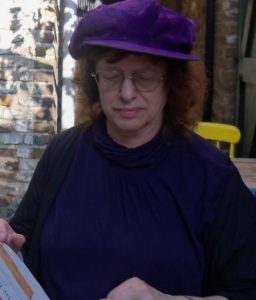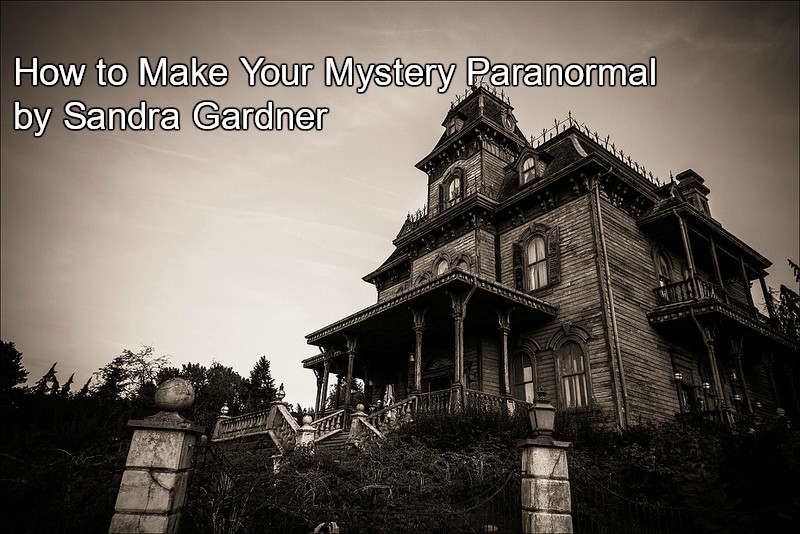First a definition: Merriam-Webster: Definition of paranormal: not scientifically explainable: supernatural
If you want to write a story — any kind of story — with a paranormal element, it has to have believability. Whether you’re world-building — say a story set in a mythical time or place – or just adding a ghost or two, the reader needs to be able to suspend disbelief.
An example of a classic ghost story is The Turn of the Screw, a 19th-century novella by Henry James. Set in a real setting — a country house in southeast England — it’s populated with real people, a governess and two children. There also appears to be not just one ghost, but two, out to do harm to the children. The governess tries to protect them from the malevolent spirits, but fails, and in the end, there is a death. The novel is known as a ghost story and a gothic mystery.
Then there are mysteries with “good” ghosts. The Aunt Dimity books by Nancy Atherton are examples. In the first novel, Lori Shepherd discovers an old journal written by her mother’s friend Aunt Dimity, now deceased. Aunt Dimity begins talking to Lori through the pages of the book. More than that, it turns out that Aunt Dimity is an excellent guide in solving crimes, including murder.
Several of Clea Simon’s mysteries include a ghost cat. The ghost of Dulcie Schwartz’s pet cat, Mr. Grey, first appears in Shades of Grey, warning his mistress about a dead body. He acts as a spirit guide and doles out cat-like, inscrutable advice. He mostly acts like a cat, though a ghost, and is believable in his own way.
In Gigi Pandian’s Accidental Alchemist Mysteries, there are several paranormal elements woven into the mysteries. The novels are set in present- day Portland, Oregon. In the first book, Zoe Faust (great last name!), the alchemist, has just moved into a dilapidated old house. Zoe, who might look to be a young woman in her 20s, was actually born in Salem, Massachusetts in 1676. And when Zoe unpacks her luggage, she discovers a stone gargoyle that thinks and walks and talks. But there’s a real dead body on her porch, so the two are off on their first detecting adventure.
In the first of my Mother-and-Me Mysteries, Marabella Vinegar’s recently deceased mother comes back to help get her adult daughter out of trouble. Marabella has just discovered the corpse of her longtime psychotherapist and becomes the prime suspect of an NYPD detective.
Other than the minor fact that the mother is dead, she talks and acts like an overprotective, interfering mother of an adult daughter who, at nearly 40, is still single and works for the boss from hell. And who has spent years in therapy, mainly because of her relationship with said mother.
The good news is that Marabella’s 70-year-old ghost mother has developed certain … supernatural …abilities in the week she’s been in the hereafter. She can waft through walls and ceilings, and appears to be invisible and inaudible to everyone except her daughter. This gives the mystery-loving ghost (a wannabe Jessica Fletcher or Miss Marple) the means to be an invaluable asset to Marabella in her sleuthing adventures.
Except for being a ghost, Marabella’s mother is pretty much an ordinary 70-year-old woman. She has a yen for the older gentleman in the apartment next to Marabella’s; complains about her ungrateful relatives; and constantly gives her daughter unasked-for and unwanted advice. She also complicates her daughter’s life, especially when Marabella begins a relationship with a sexy veterinarian working at the same college as she does.
But the most important feature in the Mother-and-Me Mysteries, as in Gigi Pandian’s, Clea Simon’s, Nancy Atherton’s, and other paranormal mystery writers’ books, is, of course, the mystery. The ghost cat, the journal ghost, the gargoyle, and the ghost mother are there to help the main character solve the mystery. And the characterization of the gargoyle, cat, journal ghost and mother ghost, brings a lighter, sometimes comical, element to the story.
The writer needs to keep in mind that the main thing the reader expects when he or she picks up a mystery, paranormal or not, is a detecting and solving of said mystery with a satisfactory ending. Not necessarily always a happy one, but one that has to make sense in the circumstances. It’s fine to have a ghost (or two) or other otherworldly element (as in a 300-year-old alchemist detective or a talking journal) in a mystery. But the mystery has to be primary, crafted with a believable premise and ending.
If a paranormal writer constructs a whole world in the story, such as setting it on another planet, in an imaginary world, at a time in the past or future, populated with creatures that resemble nothing on this earth, it veers into the fantasy end of supernatural fiction.
Clea Simon, Nancy Atherton and I, have contented ourselves with setting the mystery in a recognizable time and place, with real people. And even though Pandian’s Zoe may be 300-plus-years old, she thinks, talks and acts like a real person in today’s world.
To my mind, writing a paranormal mystery makes double the fun. It gives you the freedom to construct an otherworldly element any way you want — within the framework of the whodunit you’ve spun.
 Sandra Gardner is the author of seven books, fiction and non-fiction. Dead Shrinks Don’t Talk, the first in the three-book Mother-and-Me mystery series, was published by Black Opal Books in May, 2018. Grave Expectations, book 2, was released in December, 2018. Death of a Nuisance, book 3, is scheduled for 2019. Halley and Me, a coming-of-age novel, won the 2012 Grassic Short Novel Prize from Evening Street Press in 2012. Non-fiction books include Teenage Suicide and Street Gangs in America, published respectively by Simon & Schuster and Franklin Watts. Street Gangs in America received a book award from the National Federation of Press Women. Previously, she was a contributing writer and columnist for The New York Times.
Sandra Gardner is the author of seven books, fiction and non-fiction. Dead Shrinks Don’t Talk, the first in the three-book Mother-and-Me mystery series, was published by Black Opal Books in May, 2018. Grave Expectations, book 2, was released in December, 2018. Death of a Nuisance, book 3, is scheduled for 2019. Halley and Me, a coming-of-age novel, won the 2012 Grassic Short Novel Prize from Evening Street Press in 2012. Non-fiction books include Teenage Suicide and Street Gangs in America, published respectively by Simon & Schuster and Franklin Watts. Street Gangs in America received a book award from the National Federation of Press Women. Previously, she was a contributing writer and columnist for The New York Times.
Photo credit: Fotografik33 – www.fotografik33.com on VisualHunt / CC BY-NC-ND

Thanks for being on the blog today, Sandra! I’m a fan of Nancy Atherton, and it’s great to read the various ‘takes’ on paranormal mysteries.
thanks so much for inviting me, Elizabeth! It was a pleasure — and lots of fun.
The ghost has to be just an additional weapon in the slueth’s bag of tricks, not the focus.
Hi Alex,
Yes, you’re right. The mother in the Mother-and-Me Mysteries is an additional weapon. Marabella Vinegar, the MC, does the solving of the mystery. Same with Pandian’s, Atherton’s, and Simon’s mysteries. Thanks for your comment.
This is an interesting post. I don’t normally read a lot of fiction with a paranormal element in it, precisely because it’s not always done credibly. But, as you’ve shown, there are ways to do it so that the reader can ‘buy in.’
thanks so much, Margot! Yes, you definitely need believability in your mystery.
I wonder what else could be used besides a ghost in mysteries? Paranormal covers a lot of supernatural elements. Someone could have fun with it.
Thanks for your response, Diane. You’re right. For example, the journal in the Aunt Dimity books and the gargoyle in Pandian’s novels.
Hi Sandra,
First. I very much enjoyed your novel and thought your paranormal element was quite original. My Kim Reynolds mystery series also uses an element of the paranormal in that Kim has E.S.P. and it helps her solve murders. I think the paranormal element adds an interesting quality to mystery fiction.
hi Jacqueline
thanks so much for your comment! what is the first book in your Kim Reynolds’ series? (I always try to start reading a series with the first book!)
sandy
Mystery and fantasy are two of my favorite genres. I love books that have one foot in each. This articles spurs me to consider writing one myself.
Hi Zoe,
thanks so much for your comment! Will be great to read a paranormal mystery– if you decide to write one!
sandy
And though I don’t usually read fantasies, I loved your Kilts and Catnip book!
sandy
Great post! Sounds like a wonderful read.
Hi Minette
thanks so much for your comment!
sandy